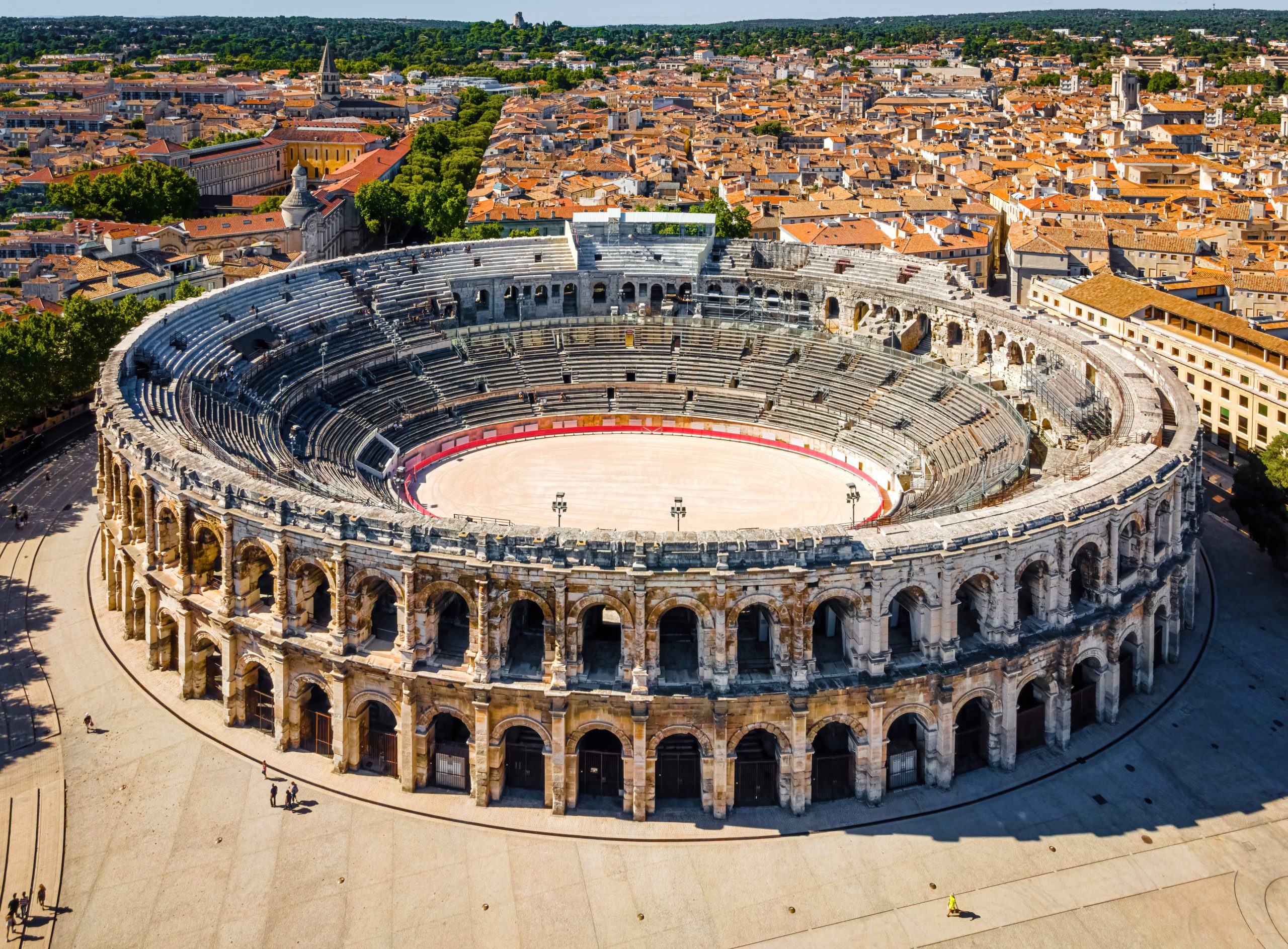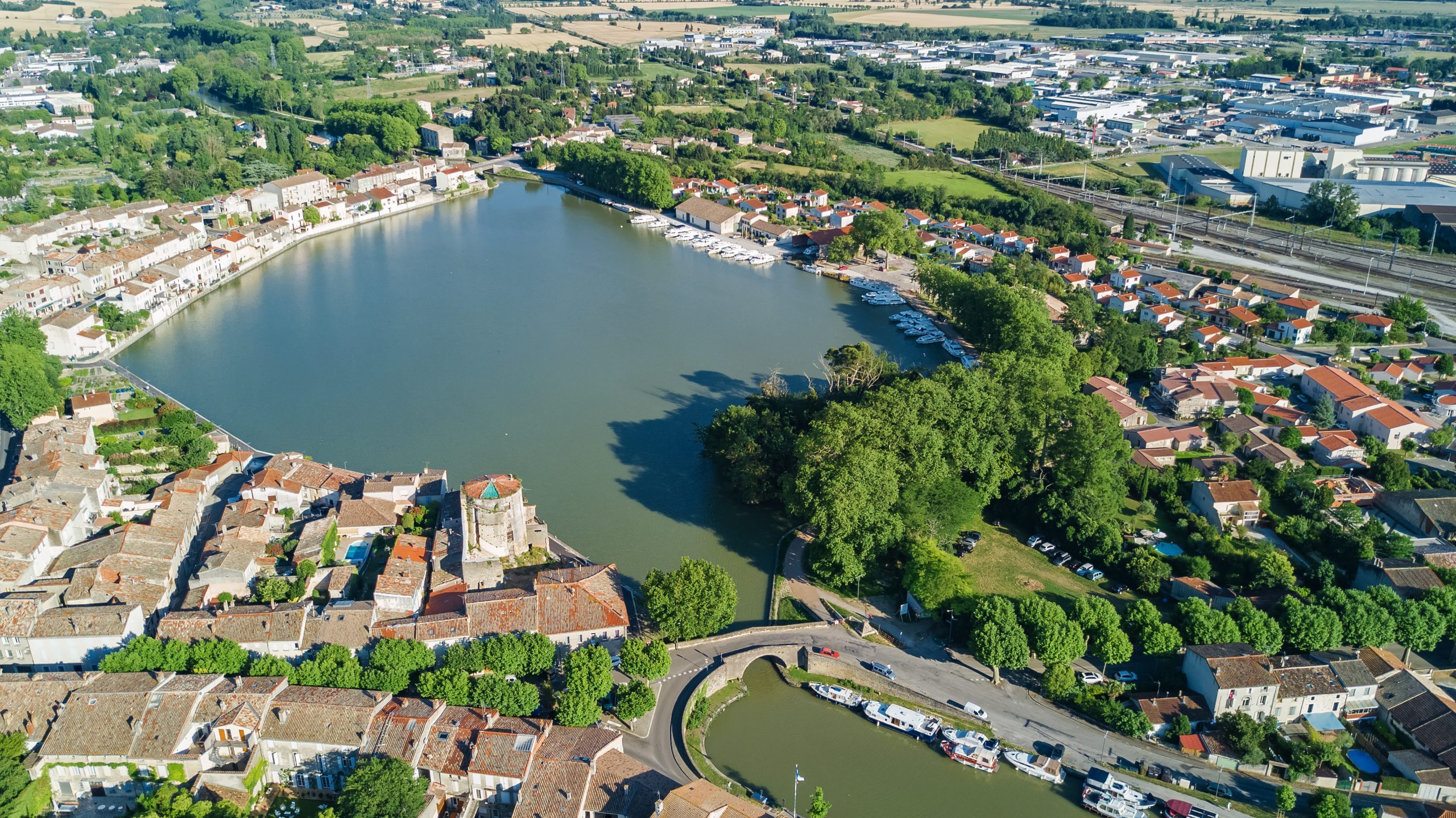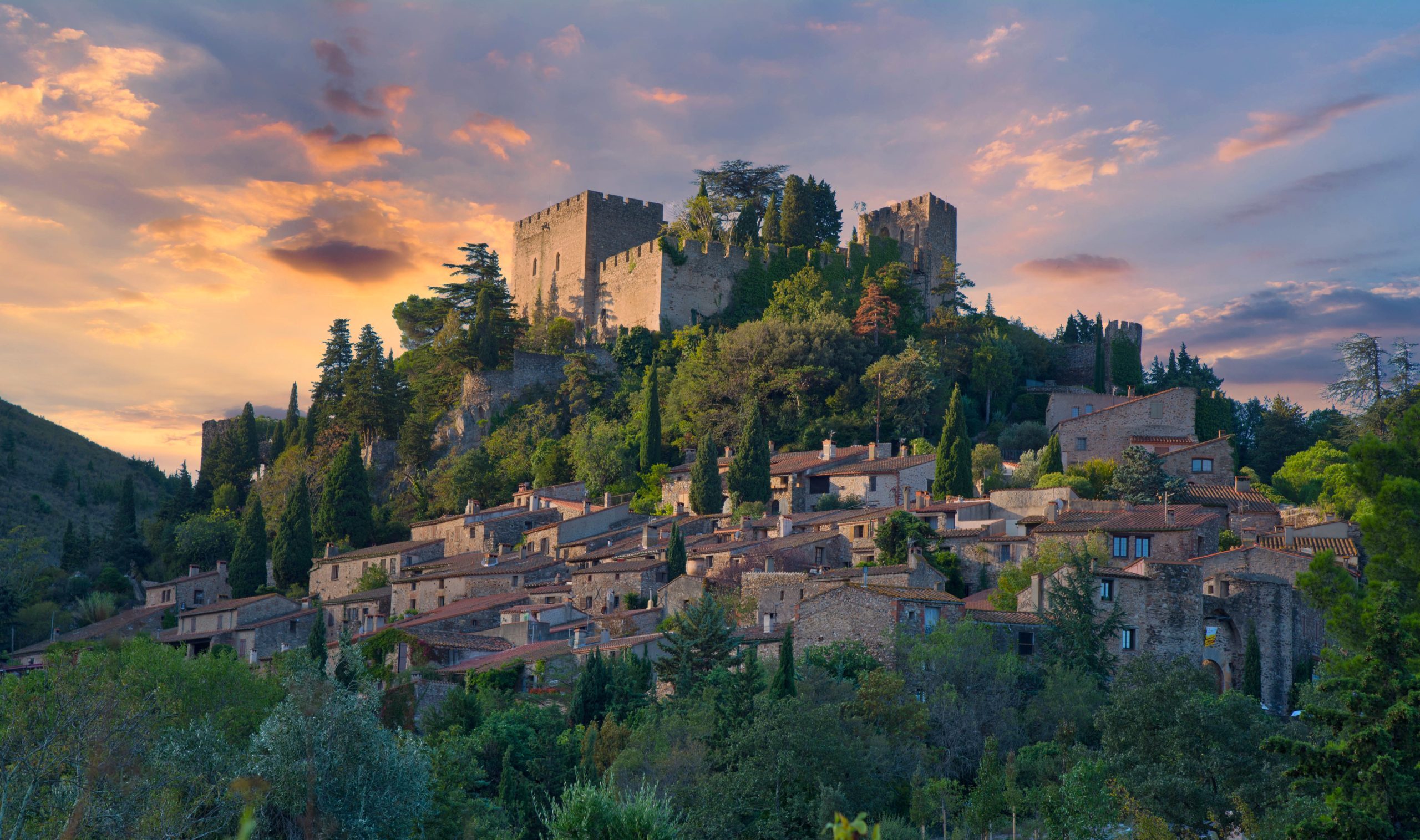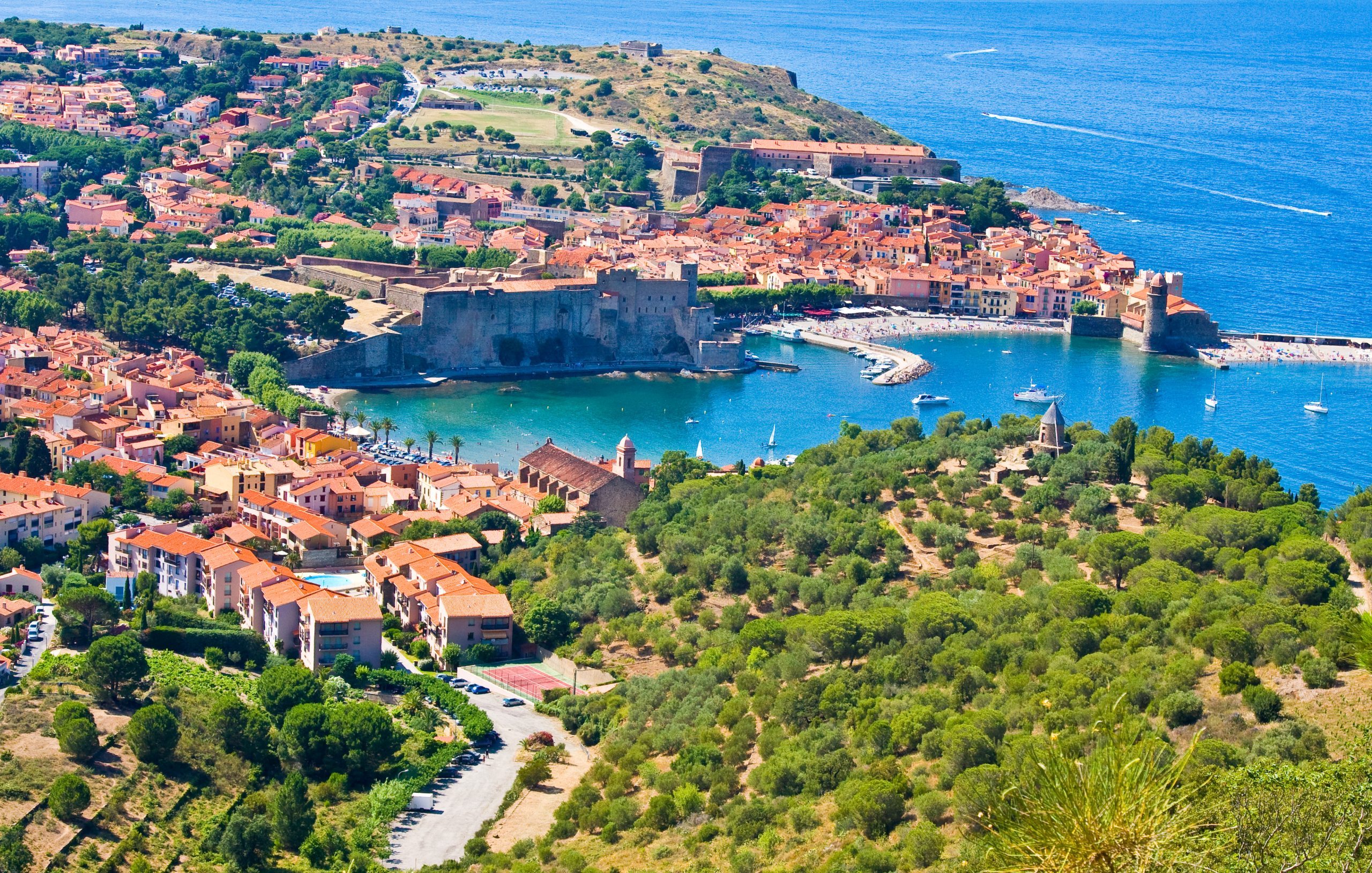The major cities, beautiful monuments, and archaeological sites, along with many well-preserved ruins and great crossroads, illustrate the influence of the Roman civilization on Gaul.
At the end of the Third Punic War in 149 BC, the Romans ruled most of the Iberian peninsula. Still, they had not conquered the territories along the Mediterranean Sea between Italy and Spain. In a series of military expeditions in the 120s, they brought under control some of the local tribes and, with the acceptance of other tribes and the support of Massilia (now Marseilles), a Greek town and a longtime ally of Rome, they were able to gain control of the coastal region of Southern France (called Gallia Transalpina or Ulterior to distinguish it from Gallia Cisalpina or Citerior, i.e., northern Italy).
From 81 to 96 AD, the Romans traced and paved the mythic route, said to have been traveled by Heracles. They called it Via Domitia, the first Roman road built in Gaul. The construction of the road was commissioned by Gnaeus Domitius Ahenobarbus, whose name it bore, following the defeat of the Allobroges and Averni by himself and Quintus Fabius Maximus Allobrogicus.
In 118 BC, Gnaeus Domitius established a fortified garrison at Narbo on the coast near Spain to guard against construction. Colonia Narbo Martius became a Roman colony called Colonia Narbo Martius (now Narbonne). Eventually, Gallia Narbonensis became known as Provincia Nostra (“Our Province”) or Provincia (“the province”).
Which small towns and villages played an important role?
Via Domitia can be traced on topographical maps overprinted with the ancient route. Traveling between Nîmes (Nemausus) and Narbonne (Narbo Martius), we can admire to this day the impressive mosaics, great arenas, rich museum collections, a one-of-a-kind aqueduct, and a network of roads. The following locations are all powerful reminders of this great Gallo-Roman culture, architecture, and civil engineering:
- Nîmes (Nemausus)
- Uchaud
- Vergèze
- Codognan
- Gallargues-le-Montueux
- Ambrussum
- Vérargues
- Lunel-Viel
- Saint-Geniès-des-Mourgues
- Saint-Brès
- Lunel-Vieil
- Castries
- Le Crès
- Castelnau-le-Lez
- Montpellier
- Montbazin
- Mèze
- Pinet
- Saint-Thibéry
- Béziers
- l’oppidum d’Ensérune
- Narbonne (Narbo Martius)
At Narbonne, a section of the Via Domitia is exposed in the Place de l’Hôtel de Ville. The Via Domitia crosses the river Aude by a seven-arched bridge at the site of the Pont des Marchands.
Between the cities that Via Domitia linked, there was a network of mansions at distances of a day’s journey for a loaded cart, at which shelter, provisions, and horses could have been obtained.
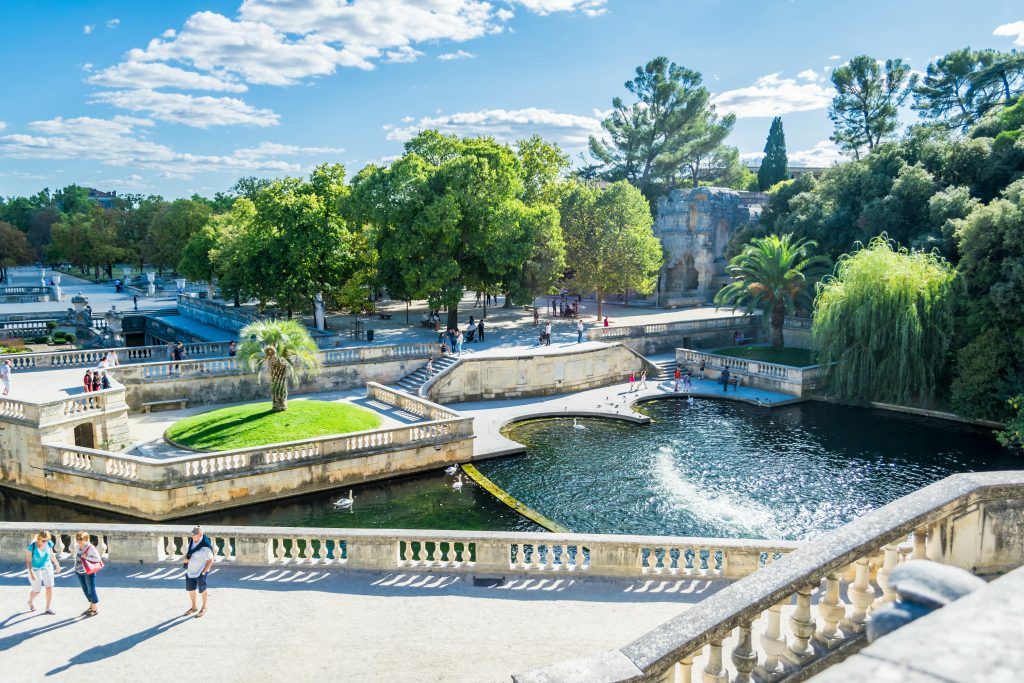
Why did they decide to make Narbonne their capital?
Via Domitia run through Nîmes (Nemausus), follows the coastal plain along the Gulf of Lion, and at Narbonne (Narbo Martius), it meets the Via Aquitania (which leads toward the Atlantic Ocean through Toulouse and Bordeaux).
Narbonne was the capital of the Gallia Narbonensis and the residence of the Roman proconsul. Situated at the river Aude, it was at a crucial strategic crossroads of the Via Domitia and the Via Aquitania, and it was an accessible but well-defensible port at that time. This “cusp point” in the Roman westward expansion and ensuing supply, communication, and fortification was a vital asset and was treated as such. The bulk of trade with Rome was carried out by sea, and a shipping company of Narbonne had a permanent station (agency) at Ostia (near Rome, Italy).
In 45 BC, Julius Caesar installed the veterans of the 10th Legion in Narbonne and developed the port as a competitor to Marseille (Massalia) while Marseille revolted against Roman control. In 27 BC, he visited Narbonne himself.
Narbonne gave its name to the province and was the seat of government. The city possesses beautiful stones, like a Horreum. Marble cobblestones were part of the Domitia route connecting Rome to the Iberian peninsula via the alpine hills and the Durance Valley in Provence. The archeological museum displays many antique objects from the region.
Nîmes (Nemausus)
Dubbed the most Roman city outside Italy, Nîmes became a Roman colony as Colonia Nemausus sometime before 28 BC, as witnessed by the earliest coins, which bear the abbreviation NEM. COL, “Colony of Nemausus.”Veterans of Julius Caesar’s legions in his Nile campaigns were given plots of land to cultivate on the plain of Nîmes. It increased in wealth under Roman rule during the rule of Agrippa and Hadrian.
There are Several famous monuments in Nîmes, such as the Arena of Nîmes and the Maison Carrée. Because of this, Nîmes is often referred to as the French Rome.
Nîmes has one of the best-preserved theaters that is the same impressive size as the one in Arles. The competition between the two cities was the reason for the many monuments. The famous Maison Carrée, the central temple of the forum, is known not so much for its style but for the integrity of its architecture, and the interior houses superb Gallo-Roman mosaics. The Tour de Magne is perched on the highest point in the city and is evidence of the massive defense system of the Romans. The Castellum, a receptacle tank at the end of the 50-foot canal that carried water to the city, was a rare type of Roman architecture. Other things to be discovered in Nîmes include the Temple of Diane, covered with luxurious vegetation, and the Gardens of the Source (designed in the 18th century).
“It is More Similar to Italy than to a Province” – Pliny the Elder, the governor of Gallia Narbonensis in 70 AD.
“That part of the Gallias which is washed by the inland (Mediterranean) sea is called the province of Gallia Narbonensis. (..) It is divided from Italy by the river Varus and the range of the Alps, the great safeguards of the Roman Empire. From the remainder of Gaul, on the north, it is separated by the mountains Cebenna and Jura. In the cultivation of the soil, the manners and civilization of the inhabitants, and the extent of its wealth, it is surpassed by none of the provinces and, in short, might be more truthfully described as a part of Italy than as a province” – Pliny the Elder “Historia Naturalis,” Translation by John Bostock and Henry Thomas Riley.
“In no province of the Roman Empire was Latin culture more firmly rooted, and in none did it show more Roman vigorous growth than in Gaul, especially in the south. (..) The native language had given place to that of Italy, and the Latin of Bordeaux was said to have been the purest in Gaul. Provence is still full of splendid remains of Roman architecture. Italy itself cannot show anything superior to the temples at Nimes and Vienne, the amphitheaters at Nimes and Arles, the great theatre at Orange, and the spectacular aqueduct of the Pont du Gard, which dwarfs those of the Campagna.” – Thomas Graham Jackson “Byzantine and Romanesque Architecture,” 1913.
“A colony was settled here by Marcus Agrippa, the son-in-law of Augustus: succeeding emperors took delight in embellishing Nimes with both sacred and civil edifices; no place on our side of the Alps retains so many, or such perfect monuments of ancient taste and magnificence, besides innumerable fragments, which have been made use of in building walls and gates in ages of barbarism. As the coin struck in this colony exhibits a crocodile tied to a palm tree and the heads of Caius and Lucius Caesar, sons of Agrippa, it is probable that the veterans who formed this settlement were drawn from legions that had served in Egypt and Syria, under the command of Agrippa, or his sons”, Henry Swinburne – “Travels through Spain in the Years 1775 and 1776” (to which is added a “Journey from Bayonne to Marseille,” 1787 Edition)


